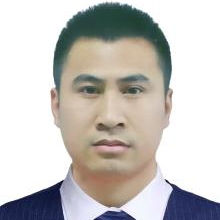Shipping Emissions and Air Pollution (2nd Edition)
A special issue of Atmosphere (ISSN 2073-4433). This special issue belongs to the section "Air Quality".
Deadline for manuscript submissions: closed (31 March 2024) | Viewed by 1385
Special Issue Editors
Interests: emission control technologies; marine diesel engine; selective catalytic reduction - SCR; exhaust gas cleaning - EGC
Special Issues, Collections and Topics in MDPI journals
Interests: energy conversion; internal combustion engines; marine engines; low/zero-carbon fuels; spray and combustion; combustion control
Special Issues, Collections and Topics in MDPI journals
Interests: shipping emission; engine simulation; digital twin; air pollutant; port; airborne noise; alternative propulsion
Special Issue Information
Dear Colleagues,
International Maritime Organization proposed a new preliminary strategy for reducing greenhouse gas emissions from ships in 2018, and the global ship pollutant emission regulations will also be comprehensive, meticulous, and strict. At present, the global shipping industry is facing the dual pressure of ship exhaust pollution control and greenhouse gas emission reduction, with green shipping and efficient transportation having become the direction of development. Likely to continue in the future, the challenges facing the shipping industry include determining how to cope with the continuous upgrading of the pollutant emission regulations for marine engines, how to efficiently and economically achieve near-zero emissions of various pollutants of marine engines, and how to truly achieve green shipping, safe operation, and efficient transportation. As far as the development is concerned, the use of low-carbon and zero-carbon fuels has become one of the most effective ways to solve the problem of ship greenhouse gas emission reduction. In spite of this, the change of engine fuel type leads to the change of pollutant emission characteristics, and the upgrading of environmental protection regulations also leads to the continuous increase of pollutant limits. It is urgent to realize the near-zero emission of various pollutants from marine engines.
This Special Issue is a follow-up of the first Special Issue entitled “Shipping Emissions and Air Pollution” (https://www.mdpi.com/journal/atmosphere/special_issues/Shipping_Emission_Air_Pollution), and will cover all aspects of shipping-related air pollution issues. We invite the participation of scholars in related fields.
Dr. Yuanqing Zhu
Prof. Dr. Long Liu
Dr. Mocerino Luigia
Guest Editors
Manuscript Submission Information
Manuscripts should be submitted online at www.mdpi.com by registering and logging in to this website. Once you are registered, click here to go to the submission form. Manuscripts can be submitted until the deadline. All submissions that pass pre-check are peer-reviewed. Accepted papers will be published continuously in the journal (as soon as accepted) and will be listed together on the special issue website. Research articles, review articles as well as short communications are invited. For planned papers, a title and short abstract (about 100 words) can be sent to the Editorial Office for announcement on this website.
Submitted manuscripts should not have been published previously, nor be under consideration for publication elsewhere (except conference proceedings papers). All manuscripts are thoroughly refereed through a single-blind peer-review process. A guide for authors and other relevant information for submission of manuscripts is available on the Instructions for Authors page. Atmosphere is an international peer-reviewed open access monthly journal published by MDPI.
Please visit the Instructions for Authors page before submitting a manuscript. The Article Processing Charge (APC) for publication in this open access journal is 2400 CHF (Swiss Francs). Submitted papers should be well formatted and use good English. Authors may use MDPI's English editing service prior to publication or during author revisions.
Keywords
- low-emission combustion technology
- exhaust aftertreatment technology
- NOx reduction technology (EGR、SCR)
- SOx reduction technology
- PM reduction technology
- carbon capture and storage
- waste heat recovery technology







